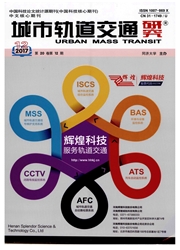

 中文摘要:
中文摘要:
对比分析指出,城市轨道交通线路断面客流量变化与道路交通断面客流量变化具有相似性,但城市轨道交通线路断面客流时间序列具备特有的尖峰厚尾特性,其变化的敏感程度依赖时空条件,常用于道路领域的广义自回归条件异方差(GARCH)模型无法直接用于城市轨道交通领域。基于此,引入广义误差分布(GED)虚变量,构建改进的GARCH模型,并基于成都地铁1号线下行断面客流时间序列数据,借助EViews和Matlab软件对改进前后的模型效果进行实证对比分析。结果表明,改进后的虚变量GARCH模型比原始的GARCH模型具有更好的适用性。
 英文摘要:
英文摘要:
The variation of section passenger flow in urban rail transit is similar to that in road traffic through a com- parative analysis. But the time series data of the former has peculiar characteristics of high kurtosis and fat tail, its sen- sitivity of variation depends on space-time condition, there- fore, the GARCH model which is usually used in road traf- fic cannot be implemented directly in urban rail transit. For this reason, dummy variables are introduced to construct an improved GARCH model in this paper. Furthermore, based on the time series data of the downstream section passenger flow on Chengdu metro Line 1, the effects of models before and after improvement are comparative analyzed by using EViews and Matlab. The results show that the improved GARCH model with dummy variables has better applicabil- ity than that of the original GARCH model.
 同期刊论文项目
同期刊论文项目
 同项目期刊论文
同项目期刊论文
 PH fitting of the arrival interval distribution of the passenger flow on urban rail transit stations
PH fitting of the arrival interval distribution of the passenger flow on urban rail transit stations 期刊信息
期刊信息
